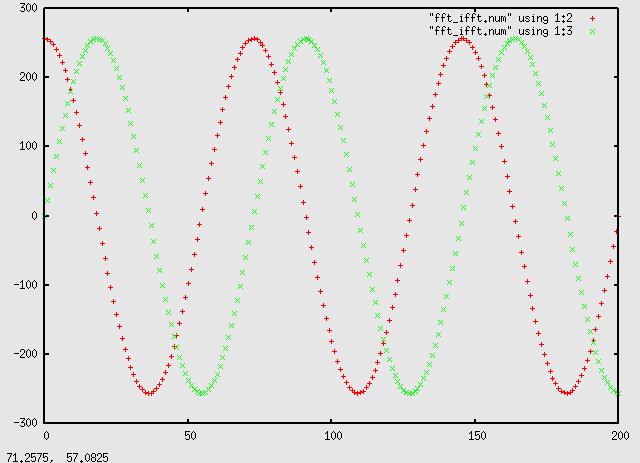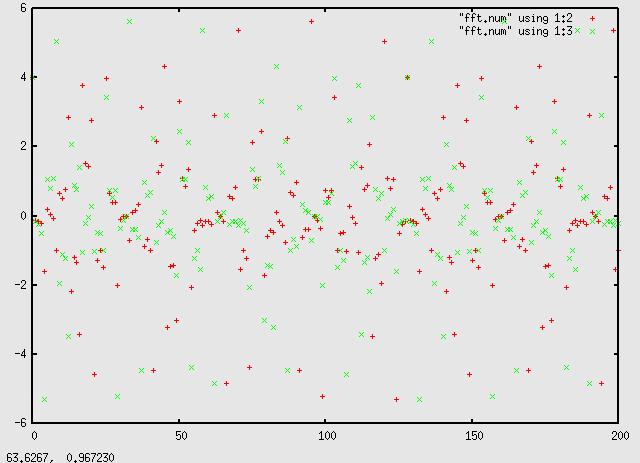Forward & Inverse DFT
Here we take the discreet Fourier transform of a sine wave and a
square wave, the immediately take the inverse DFT and look at the
results.
Test code:
#!/usr/bin/env python
#
#
from gnuradio import gr
import sys
import math
def build_graph ():
fg = gr.flow_graph ()
sample_rate = 32000
fft_size = 256
vec = []
for j in range(0,7):
for k in range(0,3):
vec += [1+1j]
for k in range(4,7):
vec += [0+0j]
src = gr.vector_source_c(vec, 1)
# src = gr.sig_source_c (sample_rate,gr.GR_SIN_WAVE,440,1,0)
s2p = gr.serial_to_parallel (gr.sizeof_gr_complex, fft_size)
fft1 = gr.fft_vcc (fft_size,True,False) # forward=True
fft2 = gr.fft_vcc (fft_size,False,False) # forward=False
p2s_2 = gr.parallel_to_serial (gr.sizeof_gr_complex, fft_size)
dst = gr.file_sink (gr.sizeof_gr_complex, "fft_ifft")
p2s_1 = gr.parallel_to_serial (gr.sizeof_gr_complex, fft_size)
fft_1 = gr.file_sink(gr.sizeof_gr_complex, "fft")
fg.connect ( src, s2p )
fg.connect ( s2p, fft1 )
fg.connect ( fft1, fft2 )
fg.connect ( fft2, p2s_2 )
fg.connect ( p2s_2, dst )
fg.connect ( fft1, p2s_1 )
fg.connect ( p2s_1, fft_1 )
return fg
def main ():
fg = build_graph()
fg.start()
raw_input ('Press Enter to quit')
fg.stop()
if __name__ == '__main__':
main ()
where we choose sig_source or vector_source for sin or square waves.
First, the plot of the transform of the sine wave:

Now if we take the inverse dft of the above transform we get:

which, amazingly, nicely recreates the original signal ok except for the
amplitude.
Next, the transform of a square wave:

and the inverse transform of it:

Finally the dft transform of an impulse:

a closer look:

and here's the reverse dft of the above

which gets our original impulse back, except for the magnitude.






